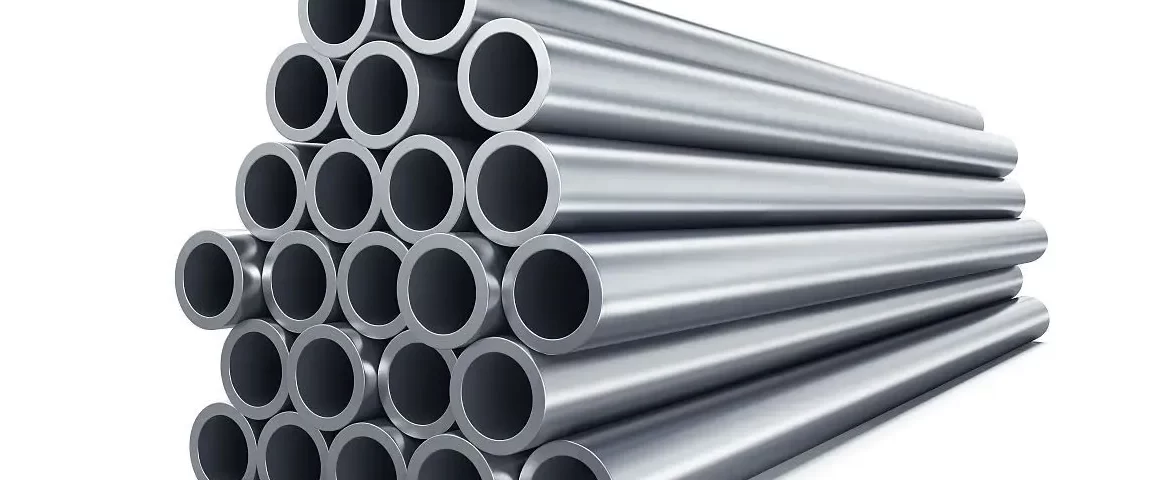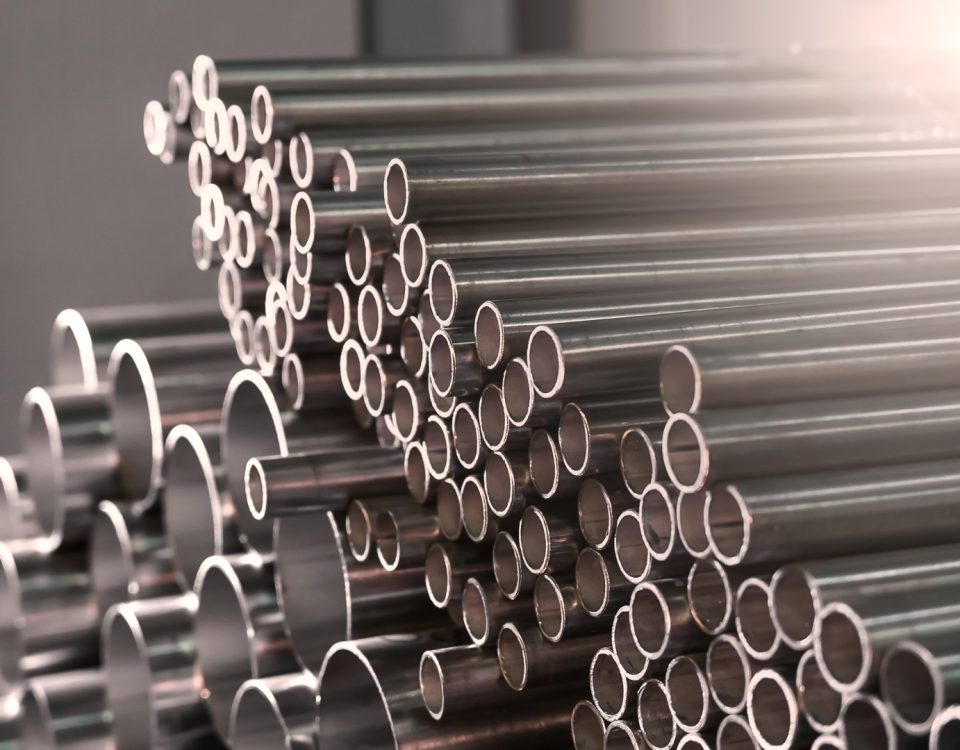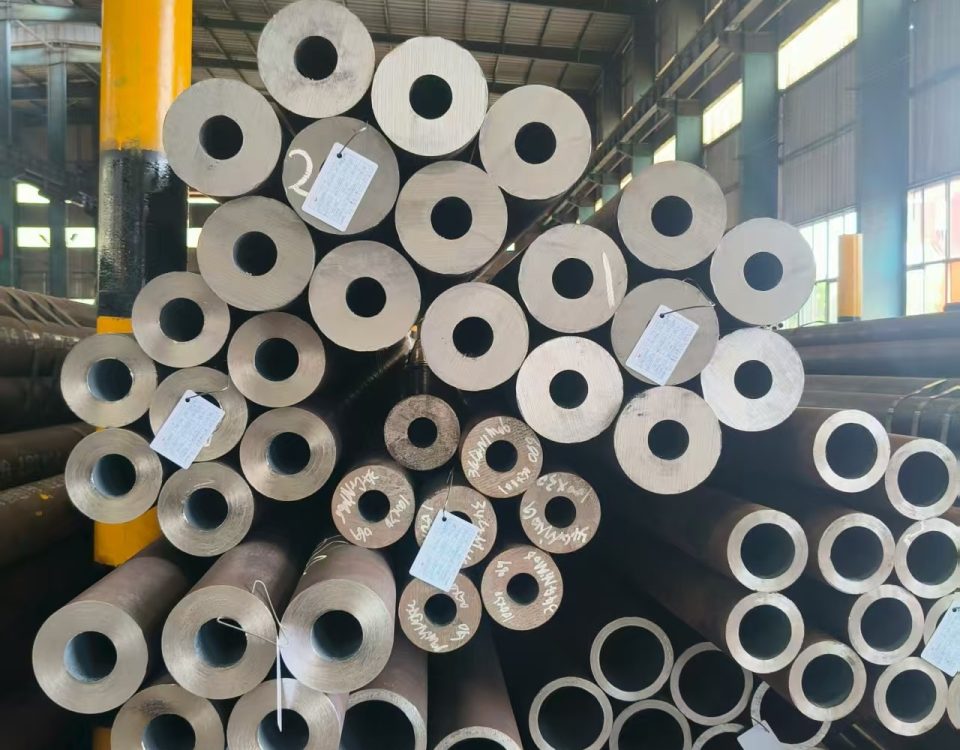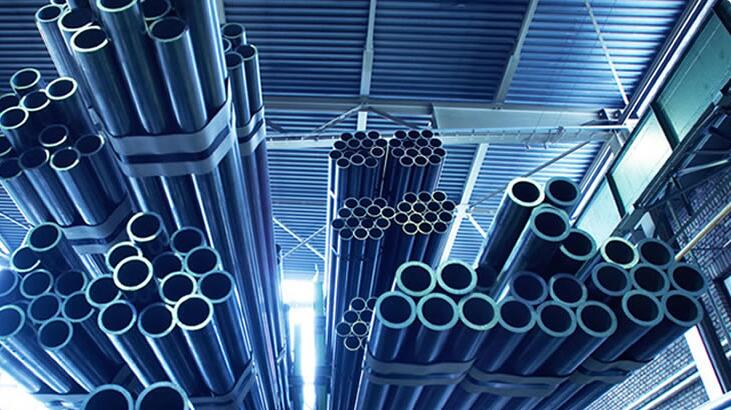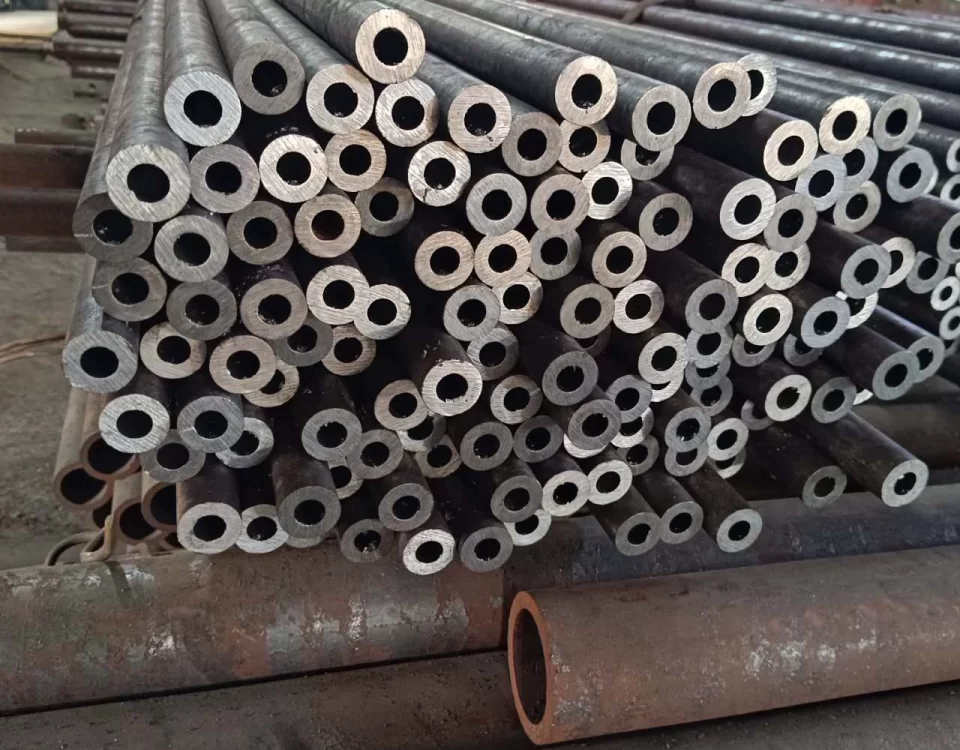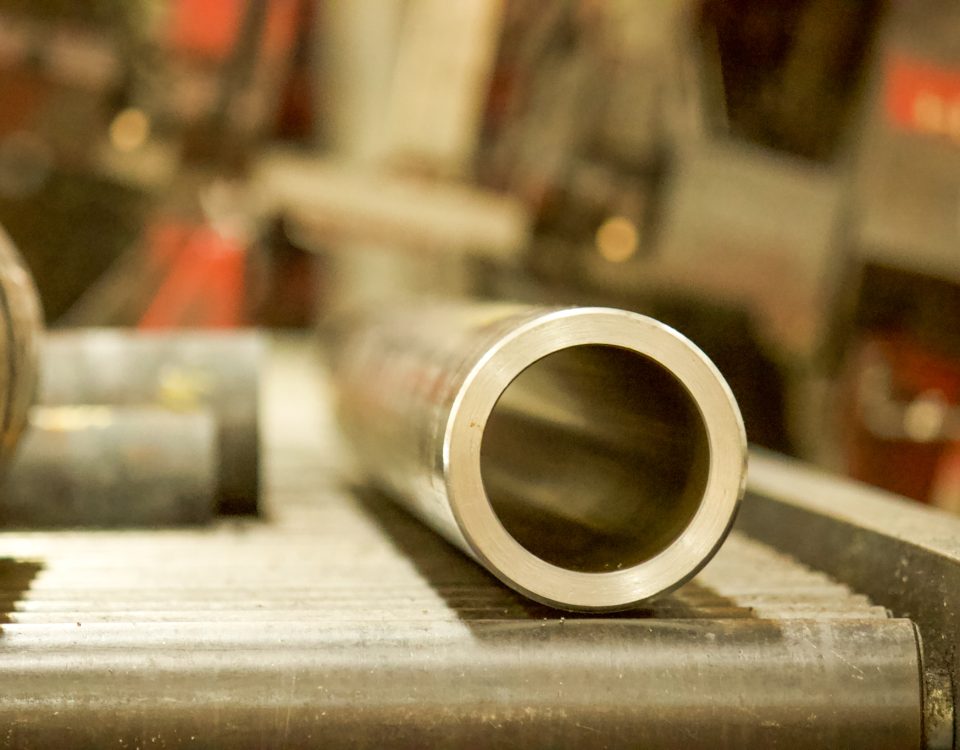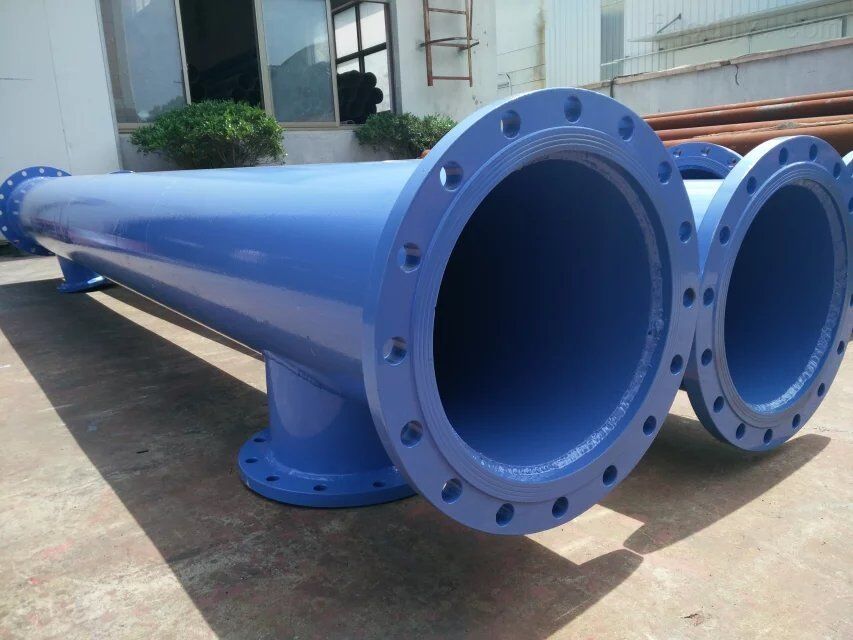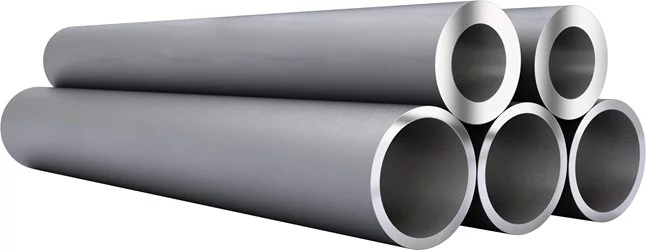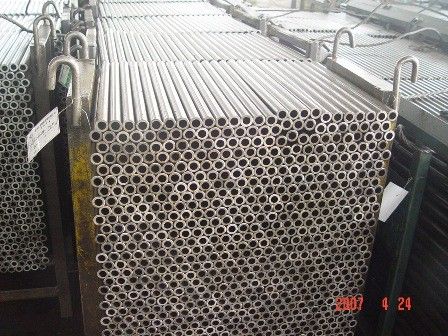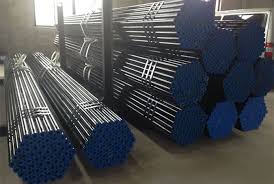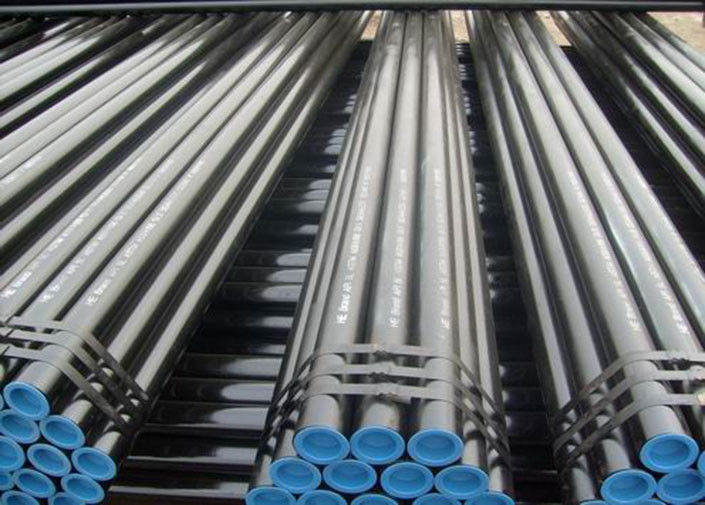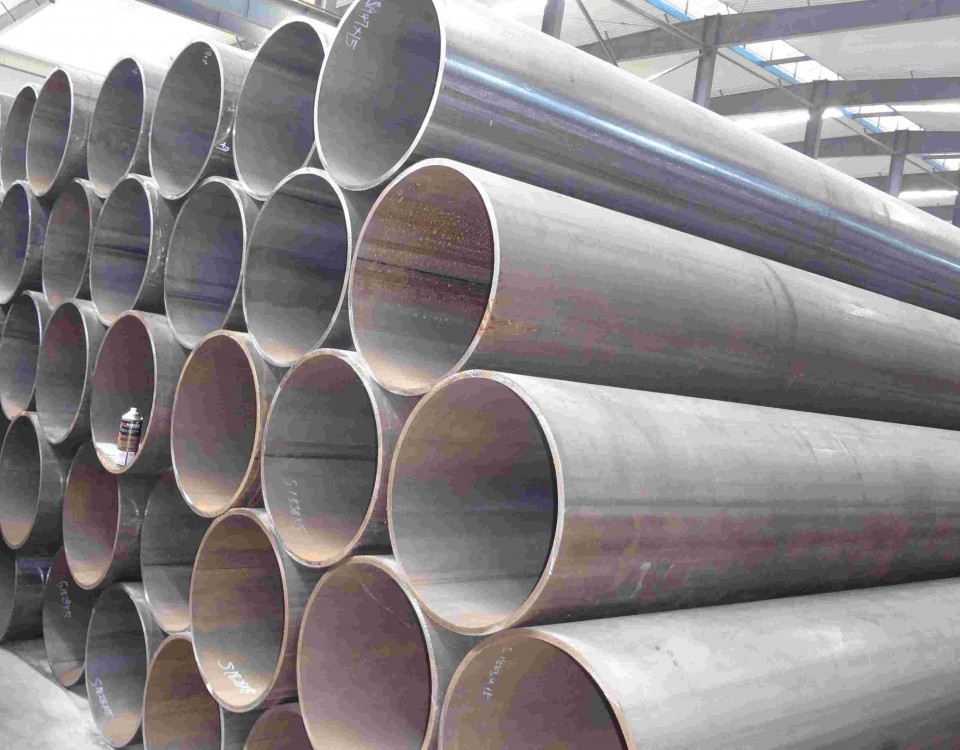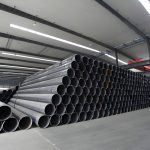
Stock Best Price For API 5L GR.B / ASTM A53 GR.B ERW pipe
September 4, 2025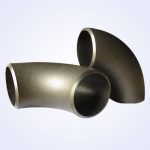
Carbon Steel Pipeline Elbows Based on Remote Field Eddy Current
September 20, 2025A Comprehensive Guide to Mechanical Alloy Steel Pipes: JIS SCM420H, SCM415H, SCM435, SCM440, SCM439, and SCM220
Abstract
Mechanical alloy steel pipes represent a critical category of engineered materials designed for high-performance applications where standard carbon steels fall short. These seamless tubes are manufactured to precise chemical and dimensional tolerances, offering superior mechanical properties such as high strength, excellent toughness, good fatigue resistance, and enhanced hardenability. This in-depth guide focuses on a key family of these steels: the Japanese Industrial Standard (JIS) G 4053 chromium-molybdenum (Cr-Mo) alloys, specifically grades SCM420H, SCM415H, SCM435, SCM440, SCM439, and the related chromium steel SCM220. We will dissect the fundamental metallurgy of each grade, explore their manufacturing processes, and delve into their heat treatment protocols. A core component of this analysis will be a detailed comparative examination of their chemical compositions, mechanical properties, hardenability, and performance characteristics through extensive parameter tables. Finally, the article will outline their primary industrial applications, selection criteria, and machining guidelines, providing engineers, designers, and procurement specialists with the essential knowledge to specify the optimal mechanical alloy steel pipe for demanding operating conditions.
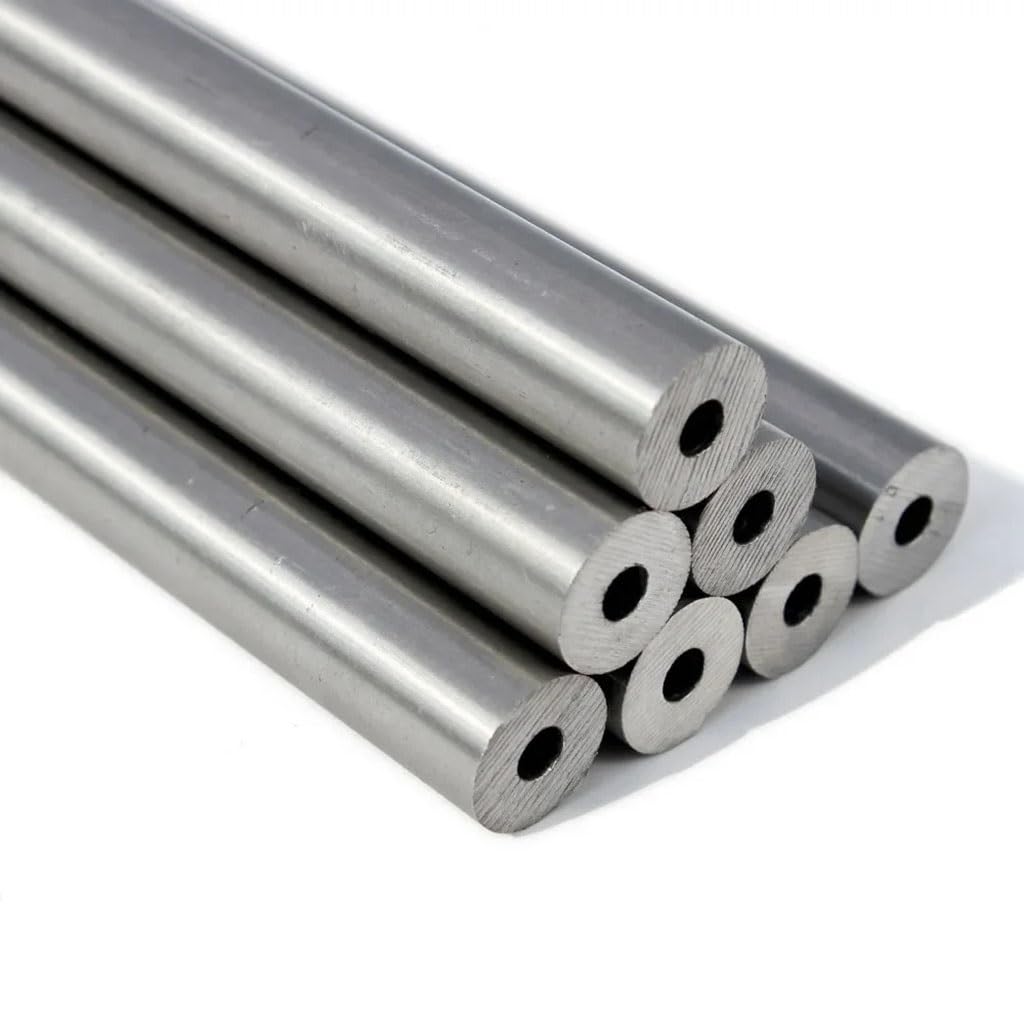
1. Introduction: The Role of Mechanical Alloy Steel Pipes
In the realm of mechanical and structural engineering, the choice of material is often the defining factor between success and failure. While standard carbon steel pipes are adequate for many low-stress, ambient temperature applications (e.g., water conduits, fencing), they lack the necessary properties for more demanding roles. This is where mechanical alloy steel pipes come to the fore.
These are seamless pipes produced through a hot- or cold-working process, specifically designed for mechanical and structural purposes rather than for pressure containment (which is governed by different standards like ASTM A106 or A53). The “alloy” designation indicates the intentional addition of elements beyond carbon and iron to impart specific, enhanced properties. The most common alloying elements include:
- Chromium (Cr): Increases hardenability, wear resistance, and provides improved corrosion resistance compared to carbon steels.
- Molybdenum (Mo): Enhances hardenability, increases high-temperature strength and creep resistance, and reduces the risk of temper embrittlement.
- Manganese (Mn): Improves hardenability and combats sulfur brittleness.
The JIS G 4053 standard specifies “Case Hardening Steel for Machine Structural Use” (H-grade steels like SCM420H) and “Carbon Steel and Carbon Manganese Steel for Machine Structural Use.” The SCM series, in particular, is renowned for its balance of properties and is widely used across global industries, often paralleling AISI 41xx series steels.
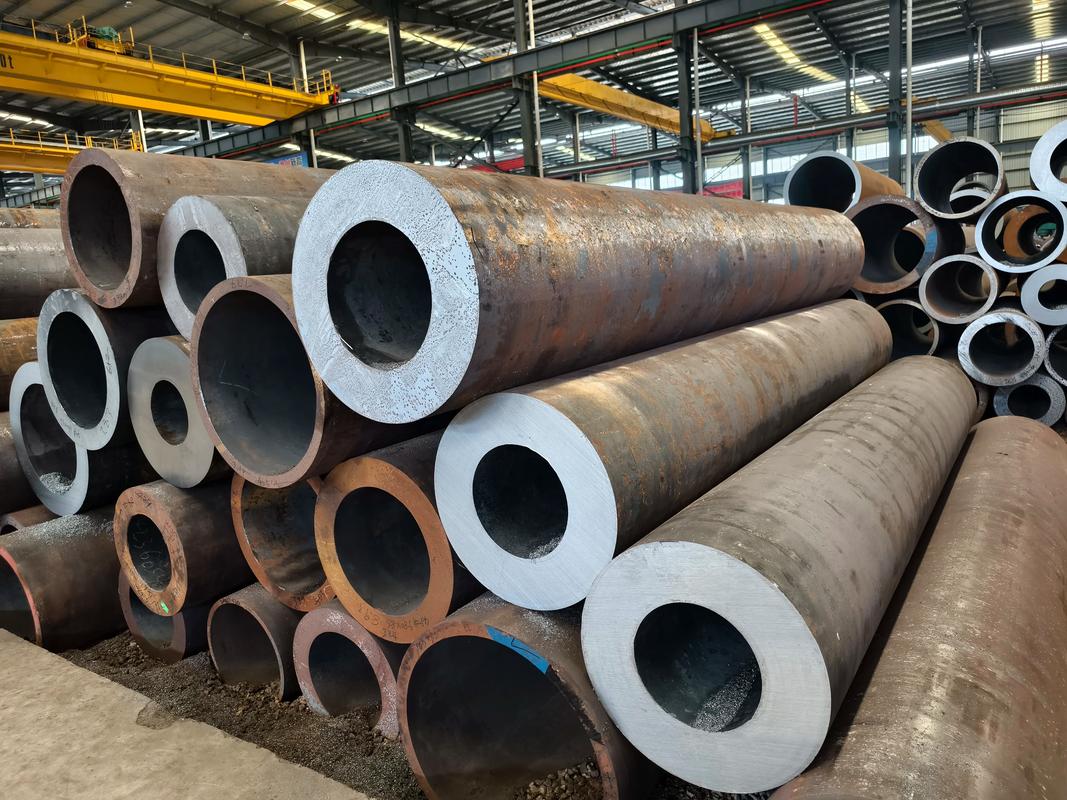
2. Understanding the JIS SCM Designation
The naming convention for these steels is logical and reveals their primary alloying components:
- S stands for Steel.
- C stands for Carbon.
- M stands for Manganese.
- The number following (e.g., 220, 415, 420, 435, 439, 440) provides an approximate indication of the carbon content and distinguishes between similar alloys.
- The Letter ‘H’: Denotes “Hardenability” steel. Grades like SCM415H and SCM420H are guaranteed to have a specific hardenability band, which is crucial for predicting the depth of hardness achieved during heat treatment, especially in quenching processes. Non-H grades (like SCM435) have chemical composition limits but no hardenability guarantee.
3. Metallurgical Deep Dive: Grade-by-Grade Analysis
3.1 SCM220 (JIS G 4052)
- Overview: While sometimes grouped with the SCM series, SCM220 is technically a chromium steel, not a chromium-molybdenum steel. It contains chromium but lacks the molybdenum addition that defines the others. This makes it a lower-cost alternative for less demanding applications.
- Primary Characteristics: Good surface hardenability due to its chromium content, offering better performance than plain carbon steels like S15C or S20C. However, its core strength and hardenability are lower than the Mo-containing grades. It is primarily used for carburizing (case hardening).
- Key Applications: Gears, shafts, pins, and other components requiring a hard, wear-resistant surface and a tough core, but where high core strength or high fatigue loads are not critical.
3.2 SCM415H & SCM420H
- Overview: These are the primary case-hardening grades within the SCM family. The “H” suffix is critical here. They are designed to be carburized (introducing carbon into the surface) and then heat-treated to create a component with an extremely hard, wear-resistant surface layer and a tough, ductile core that can withstand impact and bending stresses.
- Difference between 415H and 420H: SCM415H has a slightly lower carbon content (0.13-0.18%) compared to SCM420H (0.18-0.23%). This lower carbon content in SCM415H provides even greater core toughness after carburizing, making it ideal for parts subject to very high impact loads. SCM420H offers a slightly harder core and is an excellent general-purpose case-hardening steel.
- Key Applications: High-strength gears, transmission shafts, camshafts, bearing races, and differential pinions in the automotive industry; heavy-duty machine components.
3.3 SCM435, SCM439, and SCM440
- Overview: These grades are typically used in the quenched and tempered condition. They have higher carbon content than the H-grades, making them suitable for through-hardening to achieve high strength throughout the entire cross-section of the part.
- SCM435: A popular medium-carbon Cr-Mo steel offering a good balance of strength, toughness, and hardenability. It can be quenched and tempered to high strength levels and is also suitable for nitriding to achieve superior surface hardness and fatigue life.
- SCM439: Similar to SCM435 but with slightly lower carbon and a key difference: it is a boron-treated steel. The addition of a minute amount of boron (typically 0.0005-0.003%) dramatically increases hardenability without significantly affecting other properties. This allows for the use of milder quenchant (e.g., oil instead of water), reducing the risk of distortion and cracking, especially in complex shapes or larger sections.
- SCM440: This grade has the highest carbon content in this group. It is capable of achieving the highest hardness and strength levels but at the expense of some toughness and ductility. It is renowned for its excellent wear resistance in the hardened state.
- Key Applications: Hydraulic cylinder rods, piston rods, high-strength axles, bolts, and spindles (SCM435/439); precision measuring instruments, mandrels, ball bearings, and high-wear components like knives and blades (SCM440).
4. Manufacturing and Heat Treatment of Mechanical Pipes
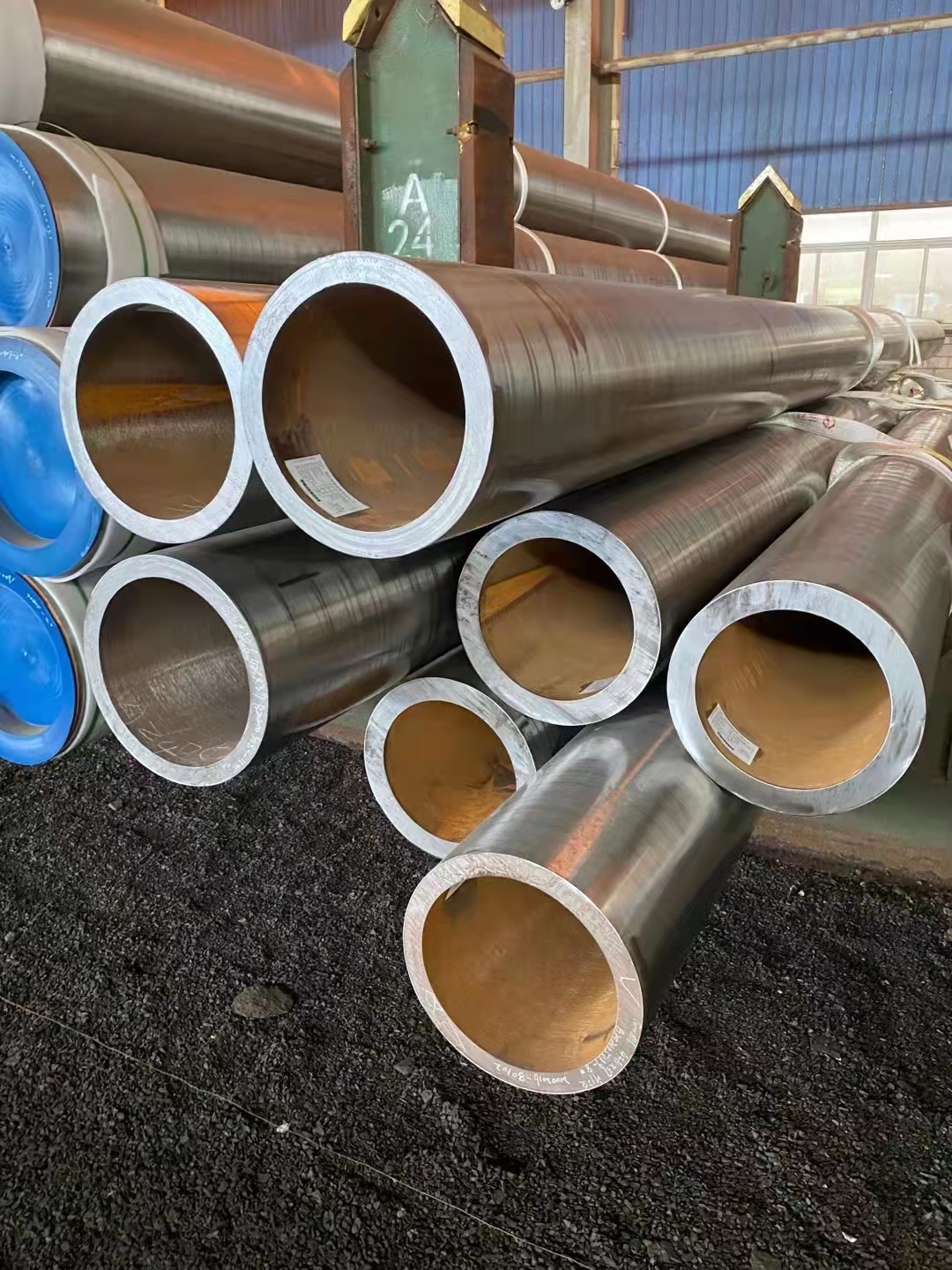
4.1 Manufacturing Process:
Mechanical alloy steel pipes are predominantly manufactured as seamless tubes. The process begins with a solid cylindrical billet of the specified steel grade. The billet is heated to a high temperature (around 1200°C) and pierced by a mandrel to create a hollow shell (“mother tube”). This shell is then elongated and rolled to the final dimensions through processes like plug rolling, mandrel milling, or pilgering. For tighter tolerances and better surface finish, the hot-finished seamless tube may be cold-drawn (cold working).
4.2 Heat Treatment:
The properties of these steels are fully realized only through proper heat treatment. The choice of process depends on the grade and the desired final properties.
- Annealing: Performed to soften the pipe for easier machining prior to final heat treatment.
- Carburizing (for SCM415H/420H): The component is heated in a carbon-rich atmosphere (e.g., gas carburizing) at 900-950°C, allowing carbon to diffuse into the surface, creating a high-carbon “case.”
- Quenching: The component is rapidly cooled (in oil, polymer, or sometimes water) to transform the austenitic structure into hard martensite.
- Tempering: Following quenching, the material is reheated to a specific temperature (typically 150-650°C) to relieve internal stresses, improve toughness, and achieve the desired final combination of strength and ductility.
- Nitriding (for SCM435/439): A surface hardening process where nitrogen is diffused into the surface at a lower temperature (500-550°C), creating an extremely hard case with minimal distortion.
5. Comprehensive Parameter Comparison Tables
The following tables provide a detailed, side-by-side comparison of the six steel grades, highlighting their critical differences.
Table 1: Chemical Composition Comparison (Weight %, JIS G 4053 / G 4052)
| Element | SCM220 (G4052) | SCM415H | SCM420H | SCM435 | SCM439 | SCM440 |
|---|---|---|---|---|---|---|
| Carbon (C) | 0.17 – 0.23 | 0.13 – 0.18 | 0.18 – 0.23 | 0.33 – 0.38 | 0.36 – 0.42 | 0.38 – 0.43 |
| Silicon (Si) | 0.15 – 0.35 | 0.15 – 0.35 | 0.15 – 0.35 | 0.15 – 0.35 | 0.15 – 0.35 | 0.15 – 0.35 |
| Manganese (Mn) | 0.60 – 0.85 | 0.60 – 0.85 | 0.60 – 0.85 | 0.60 – 0.85 | 0.60 – 0.90 | 0.60 – 0.85 |
| Phosphorus (P) Max | 0.030 | 0.030 | 0.030 | 0.030 | 0.030 | 0.030 |
| Sulfur (S) Max | 0.030 | 0.030 | 0.030 | 0.030 | 0.030 | 0.030 |
| Chromium (Cr) | 0.90 – 1.20 | 0.90 – 1.20 | 0.90 – 1.20 | 0.90 – 1.20 | 0.90 – 1.20 | 0.90 – 1.20 |
| Molybdenum (Mo) | – | 0.15 – 0.30 | 0.15 – 0.30 | 0.15 – 0.30 | 0.15 – 0.30 | 0.15 – 0.30 |
| Boron (B) | – | – | – | – | 0.0005 – 0.003 | – |
| Copper (Cu) Max | 0.30 | 0.30 | 0.30 | 0.30 | 0.30 | 0.30 |
| Nickel (Ni) Max | 0.25 | 0.25 | 0.25 | 0.25 | 0.25 | 0.25 |
Table 2: Typical Mechanical Properties After Quenching and Tempering
Note: Properties are highly dependent on section size and heat treatment parameters. Values shown are typical for a medium section size (~25mm diameter).
| Grade | Condition | Tensile Strength (MPa) | Yield Strength (MPa) | Elongation (%) | Impact Value (J) | Typical Hardness (HRC) |
|---|---|---|---|---|---|---|
| SCM220 | Q&T @ 200°C | 980 – 1180 | 785 Min | 12 | 55 | 32 – 40 |
| SCM415H | (Case Hardened) | *Core: 980-1220* | Core: >785 | Core: >10 | Core: >35 | *Surface: 58-63* |
| SCM420H | (Case Hardened) | *Core: 1030-1270* | Core: >835 | Core: >9 | Core: >30 | *Surface: 58-63* |
| SCM435 | Q&T @ 550°C | 980 – 1130 | 835 Min | 15 | 70 | 28 – 34 |
| SCM435 | Q&T @ 200°C | 1620 – 1860 | 1380 Min | 9 | 25 | 45 – 51 |
| SCM439 | Q&T @ 550°C | 980 – 1130 | 835 Min | 16 | 75 | 28 – 34 |
| SCM439 | Q&T @ 200°C | 1620 – 1860 | 1380 Min | 10 | 30 | 45 – 51 |
| SCM440 | Q&T @ 200°C | 1860 – 2100 | 1620 Min | 8 | 20 | 52 – 57 |
Table 3: Hardenability, Weldability, and Primary Application Guide
| Grade | Hardenability | Weldability (Pre/Post Heat Required) | Machinability (Annealed) | Primary Application |
|---|---|---|---|---|
| SCM220 | Medium (Shallow) | Fair | Good | Light-duty case-hardened parts |
| SCM415H | High (H-Band) | Poor | Fair | High-impact case-hardened parts (gears, shafts) |
| SCM420H | High (H-Band) | Poor | Fair | General-purpose case-hardened parts |
| SCM435 | Good | Fair/Good (with care) | Good | General through-hardened parts (axles, rods) |
| SCM439 | Excellent (Boron) | Fair/Good (with care) | Good | Large sections, complex shapes requiring oil quenching |
| SCM440 | Very Good | Poor (High Crack Risk) | Fair | High-wear, high-strength tools and components |
6. Application-Specific Selection and Machining Considerations
Selection Criteria:
Choosing the right grade involves answering key questions:
- What is the primary loading? (Wear → High Hardness; Impact → High Toughness; Fatigue → Clean Steel, Good Surface)
- Is through-hardening or case-hardening needed?
- What is the section size? Larger sections require higher hardenability (e.g., SCM439).
- What are the dimensional stability requirements? Processes like nitriding of SCM435 cause less distortion than carburizing and quenching.
- What is the cost constraint? SCM220 is cheaper than Mo-containing grades; SCM440 may require more costly grinding after heat treatment.
Machining and Fabrication:
- Machining: All these grades are typically machined in the annealed or normalized condition. Their alloy content gives them higher strength than carbon steels, which may require slightly lower speeds/feeds and more robust tooling. Free-machining variants are not standard for these grades.
- Welding: The high carbon and alloy content make these steels prone to cracking upon welding. Pre-heating (200-300°C) and post-weld stress relieving (or full heat treatment) are almost always mandatory. Welding should be avoided for SCM440 unless absolutely necessary and performed under strictly controlled procedures.
- Grinding: After heat treatment, especially for high-hardness states like SCM440, grinding is often the only viable method for achieving final dimensions and surface finish. Care must be taken to avoid grinding burns.
7. Conclusion
The family of JIS SCM mechanical alloy steel pipes offers a versatile and powerful toolkit for solving complex engineering challenges. From the case-hardening prowess of SCM415H/420H, which creates components with a “hard shell and tough core,” to the through-hardening strength of SCM435/439/440, each grade has a distinct role to play.
Understanding the subtle yet critical differences in carbon content, the presence of molybdenum, and the hardenability-enhancing effect of boron in SCM439 is paramount for optimal material selection. The provided comparison tables serve as a vital reference for directly contrasting chemical, mechanical, and application properties.
Ultimately, the success of a component made from these advanced materials hinges on a holistic approach that considers not just the raw pipe specification but also the intricate dance of heat treatment, machining, and fabrication. By leveraging the detailed information presented in this guide, engineers can confidently specify the correct SCM grade mechanical alloy steel pipe, ensuring performance, reliability, and longevity in the most demanding environments, from the powertrain of a vehicle to the heart of heavy industrial machinery.

